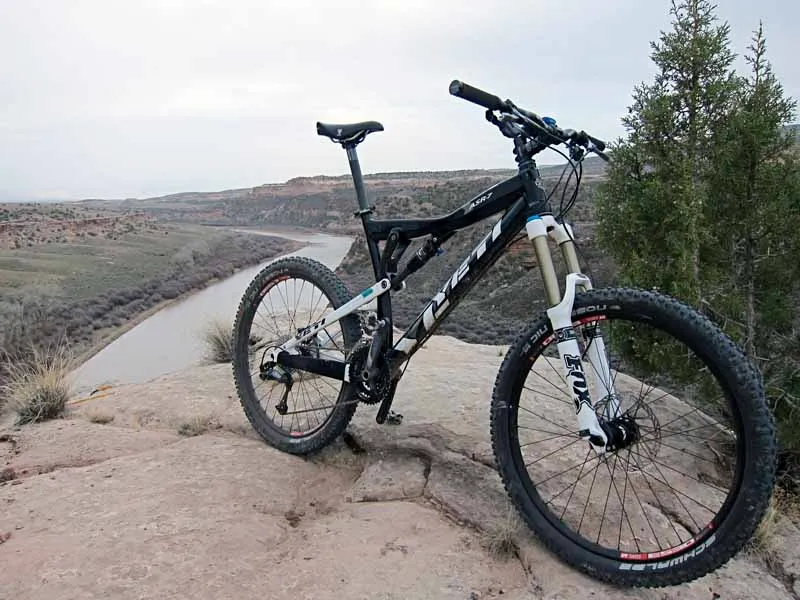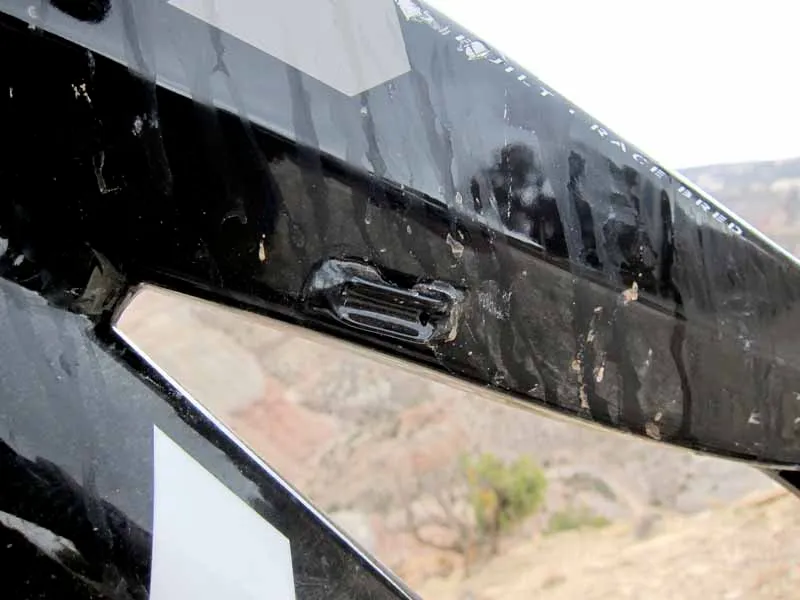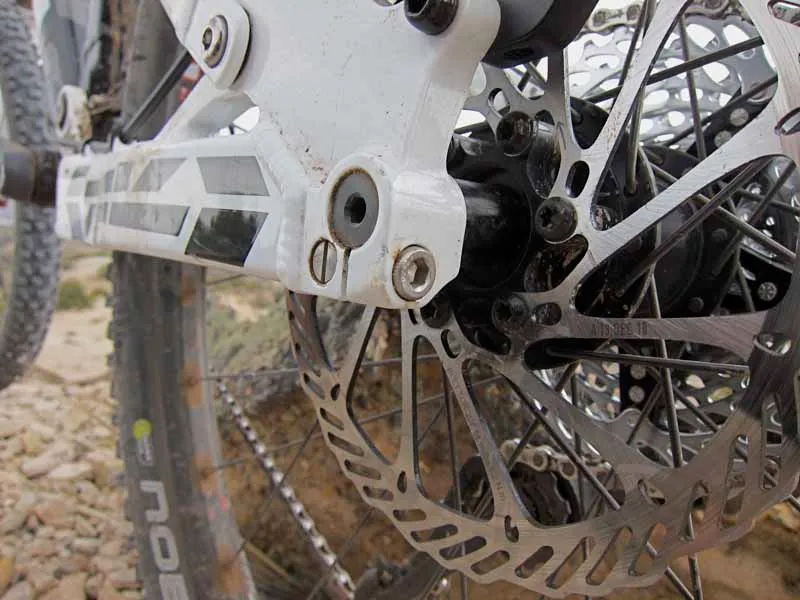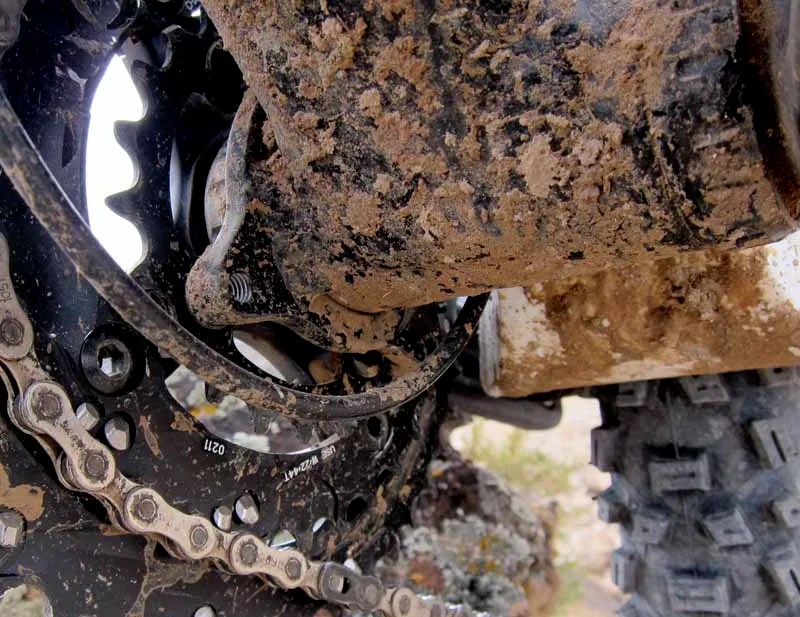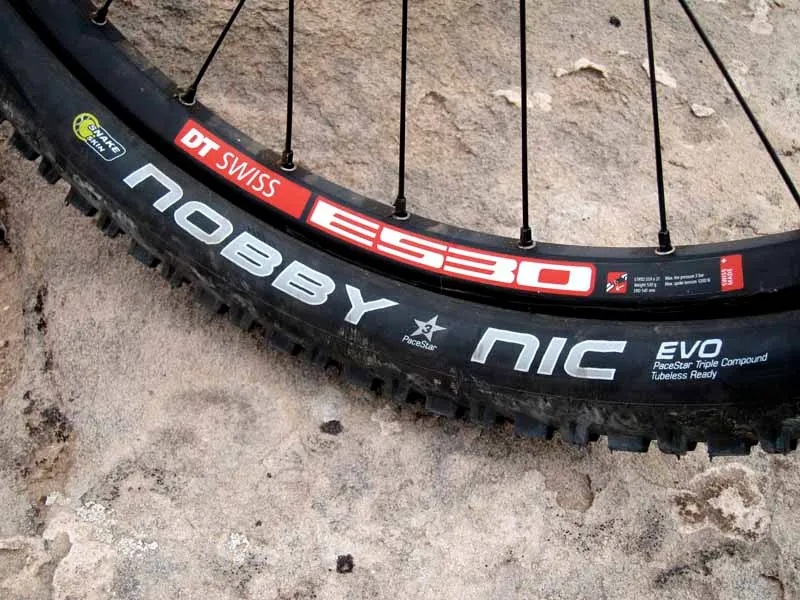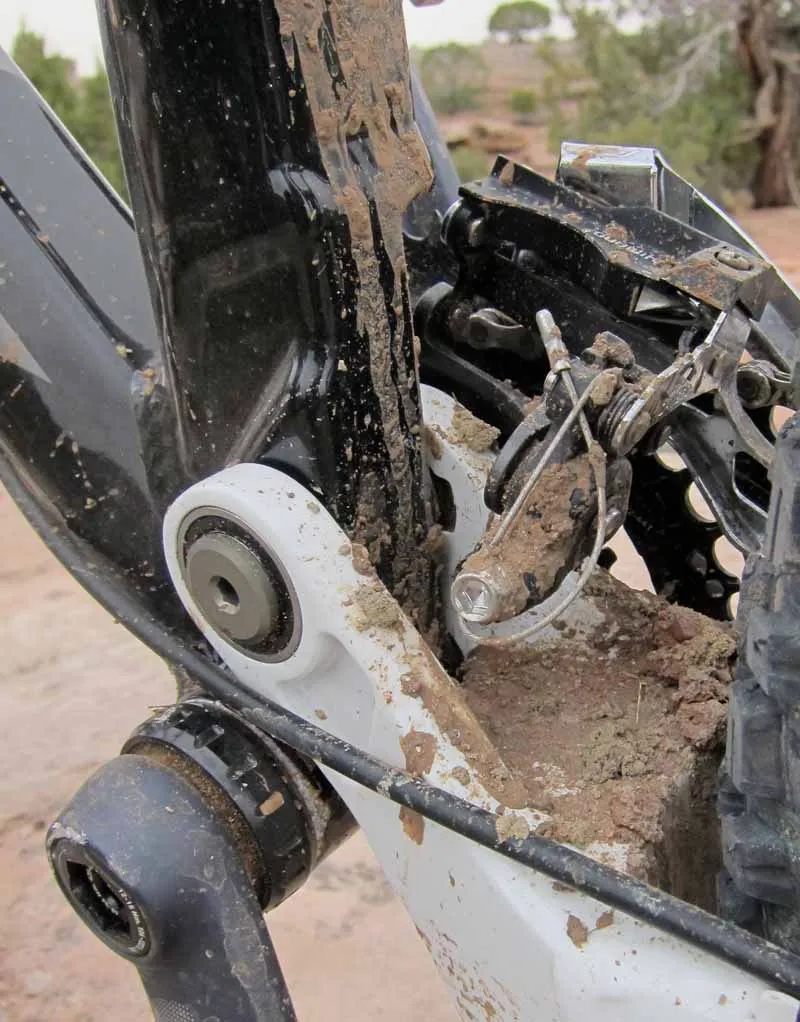Yeti’s latest offering, the AS-R 7, blurs the line between trail bike and freeride/light-downhill bike. It’s a 3.69kg/8.14lb (size medium, not the large tested here) frame with 178mm of travel, an ISCG 05 mount for chain guides, 12mm through-axle rear dropouts, and compatibility with a 200mm rotor. But it has geometry more akin to a trail bike, comes with a front derailleur mount and Fox RP23 air shock, and can be built into a sub-13.6kg (30lb) bike.
The AS-R 7 is great fun going downhill, but compromises in the suspension design may have some riders – especially bigger ones – looking for something with better climbing efficiency when there's no lift service in sight.
Frame & handling: Excellent downhill performance but climbing leaves a little to be desired
Yeti are known for their sorted geometry, and the AS-R 7's handling manners held true to this reputation. The relatively low – for a 7in-travel bike – bottom bracket (13in) leant itself to railing turns and keeping the center of gravity in the sweet spot, and we didn't have any issues with pedal clearance on most common trail obstacles despite the 175mm cranks.
The 67-degree head tube shone on steeper descents and in high speed turns but was still manageable on climbs, and the 429mm (16.9in) chainstays were long enough to provide stability at high speeds, yet short enough to allow front wheel lift when needed.
The suspension rate is quite progressive past the initial 25 percent or so of travel, and continually ramps up to the bitter end. On big hits and drops, this kept bottoming out from feeling too harsh, allowing for very stable, comfortable landings. On smaller bumps the Yeti wasn’t as supple as hoped, though – especially for a bike with this much travel – and sometimes bucked a little bit even on medium-sized hits while running as much as 33 percent sag.
Rigidity from the 7005 series, hydroformed aluminum frame with carbon 'dog bone link' was impressive. There wasn’t a high speed turn, drop off or technical descent that caused even a hint of flex. With the AS-R 7 frame tipping the scales at over 8lb, this stiffness wasn’t exactly surprising.
Once pointed uphill, it didn’t take long to realize that the AS-R 7 is essentially a gravity sled that’s outfitted with just enough pedal-friendly equipment to get a rider to the top of the hill. Relying heavily on Fox’s ProPedal platform damping, the single-pivot Yeti was a tolerable climber while spinning in the middle ring with the RP23 shock adjusted to its firmest setting.

Climbing while seated in the small ring still got the job done, but did induce noticeably more pedal bob – best to stay in the middle ring as long as possible with this one. Ascending out of the saddle with or without ProPedal engaged caused enough wallow to almost rival a coil-sprung downhill bike, though, even with the factory recommended air pressure in the shock, which equated to approximately 25 percent sag.
We bumped up the air pressure, reducing sag to 20 percent, and cranked up the rebound damping beyond our desired rate in an attempt to negate this bobbing. The result was a negligible improvement in uphill pedaling efficiency at the expense of a much lower ride quality elsewhere
We asked Yeti's Chris Conroy to comment on our assessment of the AS-R 7's pedaling performance and he didn't sound terribly surprised, saying that the extra leverage applied by longer-legged riders [our tester Zach is 6ft 3in and 200lb ed] can combine with the slack seat tube to cause bob of this type. Conroy said larger riders often have better luck with a coil-over rear shock. He also suggested that, while the AS-R 7 is designed to get a rider back up the hill, it's best treated as a seated climber.
Uphill progression, as well as pedaling in general, was also hindered by some serious heel rub on the driveside seat- and chainstay. On paper, Yeti’s use of custom 135mm spacing for their 12mm rear axle would seem to reduce the potential for rub, especially when compared to the more standard 142mm spacing. However, Yeti use unusually chunky dropouts and the stays don't angle in towards the bike's centerline right away.
We experienced significant rub even with low-profile racing-style shoes like the Pearl Izumi Octane SL. With footwear more appropriate for riding a 7in-travel bike, the heel rub was so bad that it kept us from getting past the trailhead – and it wasn't a case of having a duck-footed tester on the bike, either.
Over the weeks of rolling up to trailheads with the AS-R 7, constant remarks from other riders made it obvious that Yeti have a reputation of building cool bikes. And it’s this kind of cultural acceptance that many riders seek over finding a lighter, more efficient design with a smaller pricetag; kind of like buying a Harley over a Honda. While the AS-R 7 is fun to bomb downhill, compared to other bikes in the 7in-trail bike genre, this Yeti leaves a bit to be desired.
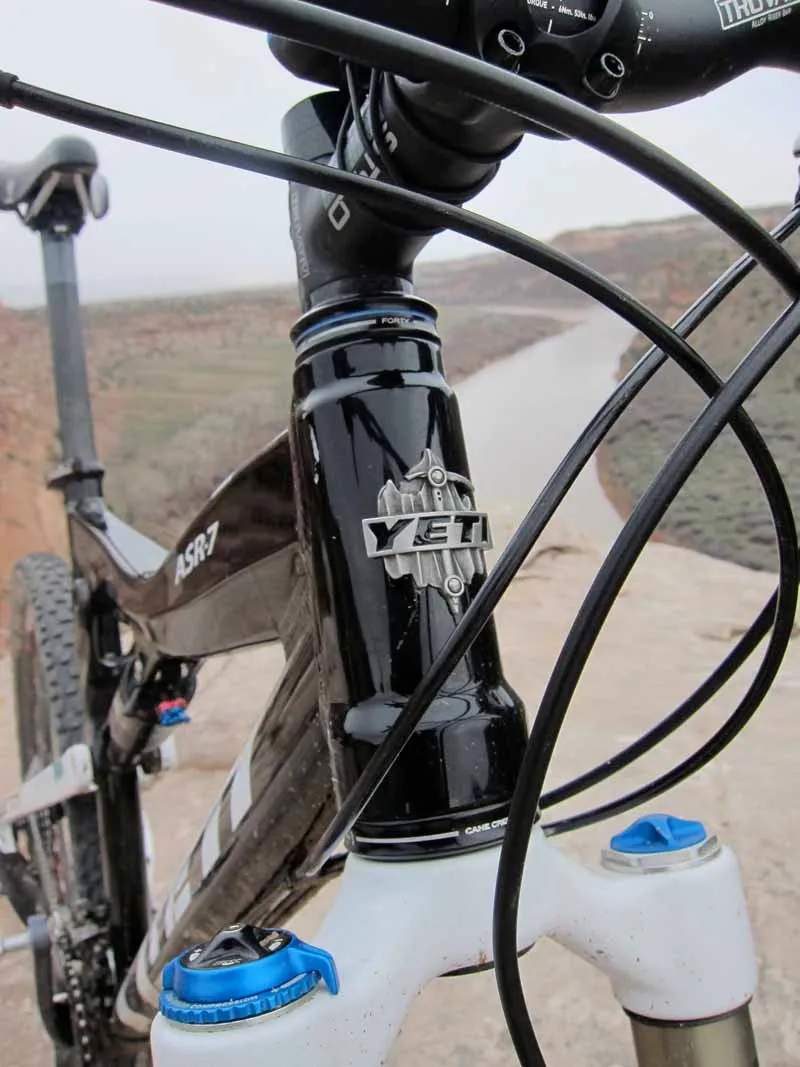
Equipment: Trail-worthy enduro spec that keeps the price down, but not the weight
In the UK, the AS-R 7 is available as a frame only (including rear axle, front derailleur) for £1,899. In the US, four complete bikes are available, ranging in price from US$3,600 to $5,500. Our test bike came with the Enduro kit, which is the most budget of the options, so it’s not surprising that our size large weighed in at 13.9kg (30.64lb) without pedals.
Up front, the stiff 160mm-travel Fox 36 Float FIT RLC fork was a good match for the frame’s stout backbone and, once broken in, soaked up everything big and small that was thrown in its way. Given the AS-R 7's intended uphill/downhill use, though, we'd recommend a TALAS or other travel-adjustable fork to help bring the front end down on steeper ascents.
While possibly not the first choice for every region, the Schwalbe Nobby Nic tires that came on the DT Swiss 350/E350 wheels were perfect for dry, rocky and loose Colorado trail conditions. The wheels themselves held up reasonably well but they're not tubeless-compatible out of the box.
Short of a Shimano SLX front derailleur, the drivetrain was a mix of SRAM X-9 and X-7. Gearing was appropriate for the bike, and the equipment was very capable, regardless of price. Avid’s Elixir 5 brakes worked well, with a 180mm rotor on the front and a 160mm on the rear. Neither fade nor squeal were an issue on trails like Grand Junction’s very technical and steep Free Lunch.
